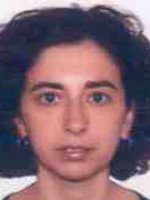abstract
Electrospray ionization mass spectrometry with variable collision induced dissociation of the isolated [(cation)(2)anion](+) and/or [(anion)(2)cation] ions of imidazolium-, pyridinium-, pyrrolidinium-, and piperidinium-based ionic liquids (Its) combined with a large set of anions, such as chloride, tetrafluoroborate, hexafluorophosphate, trifluoromethane-sulfonate, and bis[(trifluoromethyl)sulfonyl]imide, was used to carry out a systematic and comprehensive study on the ionic liquids relative interaction energies. The results are interpreted in terms of main influences derived from the structural characteristics of both anion and cation. On the basis of quantum chemical calculations, the effect of the anion upon the dissociation energies of the ionic liquid pair, and isolated [(cation)(2)anion](+) and/or [(anion)(2)cation](-) aggregates, were estimated and are in good agreement with the experimental data. Both experimental and computational results indicate an energetic differentiation between the cation and the anion to the ionic pair. Moreover, it was found that the quantum chemical calculations can describe the trend obtained for the electrostatic cation anion attraction potential. The impact of the cation anion interaction strengths in the surface tension of ionic liquids is further discussed. The surface tensions dependence on the cation alkyl chain length, and on the anion nature, follows an analogous pattern to that of the relative cation anion interaction energies determined by mass spectrometry.
keywords
COLLISION-INDUCED DISSOCIATION; TANDEM MASS-SPECTROMETRY; ALKYL CHAIN-LENGTH; PHYSICOCHEMICAL PROPERTIES; ELECTROSPRAY-IONIZATION; SURFACE TENSIONS; BIS(TRIFLUOROMETHYLSULFONYL)IMIDE ANION; THRESHOLD DISSOCIATION; PHYSICAL-PROPERTIES; BINDING-ENERGIES
subject category
Chemistry
authors
Fernandes, AM; Rocha, MAA; Freire, MG; Marrucho, IM; Coutinho, JAP; Santos, LMNBF
our authors
Groups
G4 - Renewable Materials and Circular Economy
G5 - Biomimetic, Biological and Living Materials
acknowledgements
Thanks are due to Fundacao para a Ciencia e a Tecnologia (FCT), Lisbon, Portugal, for the project PTDC/QUI/72903/2006 and to FEDER for financial support to Centro de Investigacao em Quimica, University of Porto, Portugal. M.A.A.R. and M.G.F. also thank FCT and the European Social Fund (ESF) under the third Community Support Framework (CSF) for the award of research grants with references SFRH/BD/60513/2009 and SFRH/BPD/41781/2007, respectively.




